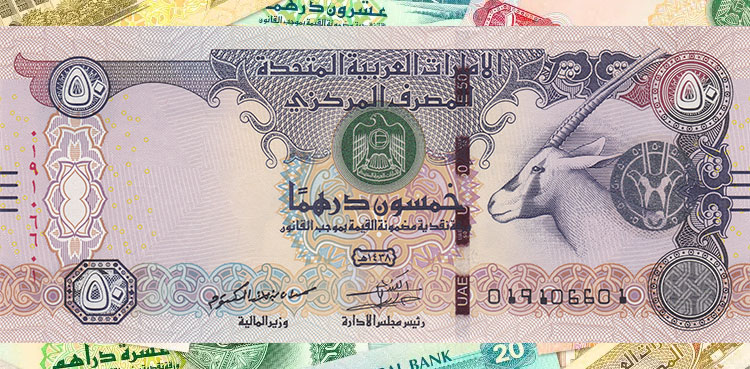Karachi, 27 May 2025 – As per the latest currency market information, the open market exchange rate for the UAE Dirham (AED) is 76.44 PKR against the Pakistani Rupee (PKR).
This consistency stems from a period of tranquility for the AED-PKR exchange, bolstered by steady remittances and strong economic conditions in both Pakistan and the UAE.
Analyzing the AED-PKR Exchange Rate
The exchange rate of the UAE Dirham in comparison to the Pakistani Rupee is affected by market forces and central bank interventions. The Dirham has been pegged to the US Dollar at roughly 3.67 AED/USD since the UAE Central Bank implemented this system in 1997. This fixed exchange rate helps maintain the Dirham’s relation to the US Dollar, fortified by the UAE’s oil-driven economy and efforts to diversify into other sectors.
In contrast, the value of the PKR is regulated through a floating exchange rate system. Our evaluation suggests that this mechanism is mainly influenced by the supply and demand for foreign exchange. The State Bank of Pakistan sometimes intervenes to mitigate volatility. Elements such as remittances, foreign reserves, trade balance, and inflation—particularly the $3.1 billion received from the UAE in February 2025—also play a role in the PKR’s valuation.
The daily conversion rate from AED to PKR is determined by both the interbank and open market exchange rates. Banks and currency exchange companies provide a buying rate of 76.67 PKR and a selling rate of about 77.25 PKR, along with a nominal extra charge for sellers. This information is updated daily at 8:00 AM Pakistan Standard Time and may fluctuate during the day based on market changes.
Impact of Stability
The fixed exchange rate of 76.44 PKR for the UAE Dirham has important implications for Pakistan and over two million Pakistanis employed in the UAE. This fixed rate provides them with confidence when transferring money back home, which benefits family businesses in Pakistan. It also supports trading firms involved in importing and exporting goods like food, textiles, and construction materials between the UAE and Pakistan, as it reduces currency-related risks.
For Pakistan’s economy, a stable AED-PKR exchange rate allows for efficient remittances, which are crucial for sustaining foreign exchange reserves. Analysts believe that this stability results from sound trade practices, solid reserves, and minimal speculative pressure. The UAE is a vital economic partner for Pakistan, where remittances are essential for stabilizing the PKR. However, the managed floating system of the PKR exposes it to domestic issues such as inflation and trade deficits. Currency specialists warn that, although the AED-PKR exchange rate is stable at present, participants in the market should remain alert to possible volatility influenced by global oil prices and geopolitical tensions that could impact the US Dollar’s value and subsequently the Dirham.
Summary of AED and PKR
The UAE Dirham, introduced in 1973 to replace the Qatar and Dubai Riyal as the UAE’s official currency, is issued and governed by the UAE Central Bank and divided into 100 fils. Represented as AED, its peg to the US Dollar is supported by the UAE’s oil wealth, prudent financial policies, and its status as a global trade center. The Dirham is commonly used throughout all seven emirates, particularly in major cities like Dubai and Abu Dhabi, as well as in popular tourist areas.
The Pakistani Rupee has been in use since 1947 and acts as the currency of Pakistan, subdivided into 100 paise and symbolized by “₨” or “Rs.” It is issued by the State Bank of Pakistan and operates under a controlled floating exchange rate regime. This means that it varies based on several factors, including inflation, trade deficits, and the availability of reserves.


Leave a Comment